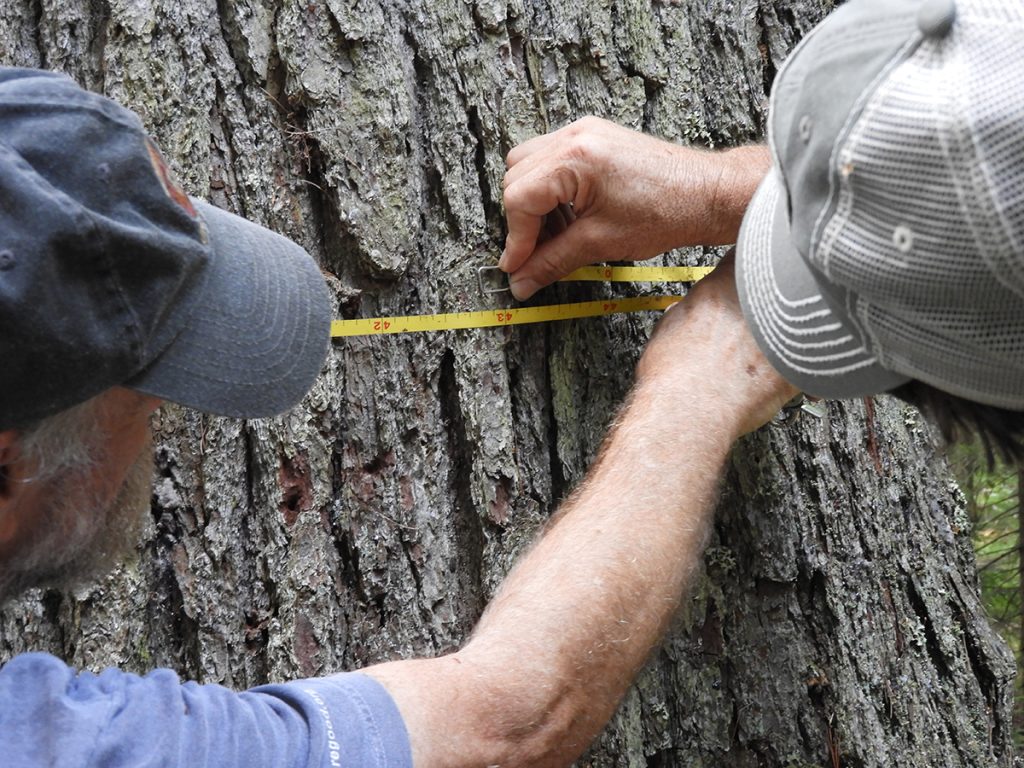By: Amanda Birchenough-Morrell – Adirondack Council Associate Development Director
Thursday, September 16, 2021
It was a hot summer day. The thermometer on the dashboard of my car read 91 degrees outside. That morning I honestly thought the day would have been better suited for a paddle or swim, but nevertheless, I set out to meet other nature lovers and scout out big trees.
The “Walk in the Woods” was my first event with the Adirondack Council, an outing intended to bring generous donors, board members, and colleagues together to explore an off-the-beaten-path location in the Adirondacks.
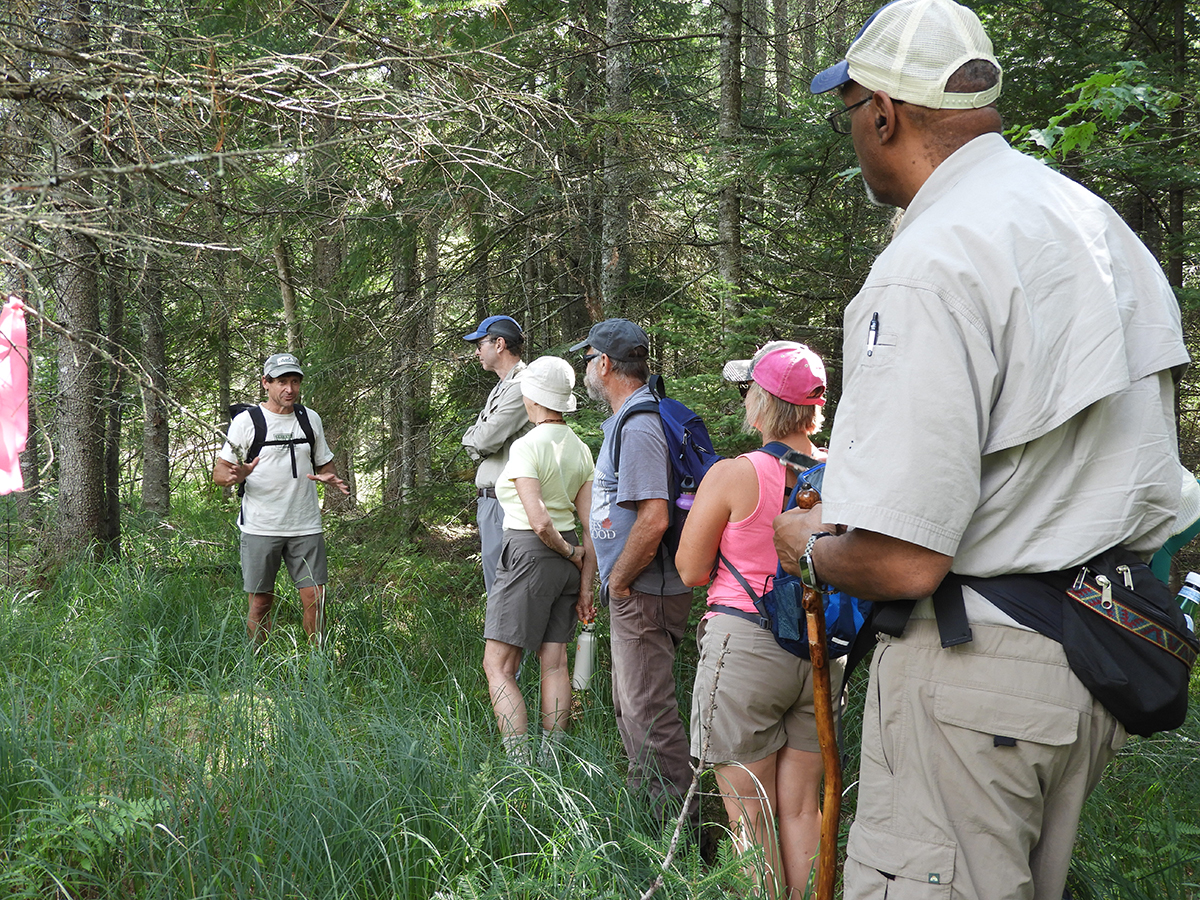 The group walks along an umarked path through a small wetland to before reaching the old-growth forest
The group walks along an umarked path through a small wetland to before reaching the old-growth forest
Into Old-Growth Forests
Months ago, when I first started hatching ideas about this type of gathering with John Davis, it didn’t take him long to propose this first event location. In John’s words, our group would be venturing to a “remarkably accessible stand of old-growth hemlock, pine, and northern hardwood forest along Halfway Brook, less than 10 miles west of the Village of Saranac Lake.” Who wouldn’t be curious?
If you don’t know him already, John Davis re-joined the Council this spring as its Rewilding Advocate to focus on advocating for wildland restoration and reconnecting wildlife pathways to benefit nature and communities. John is no stranger to outings of this sort. He has been following naturalists and biologists — including the East’s preeminent old-growth sleuth Bob Leverett — into old-growth remnants like this for decades. Long ago, John also edited An Inventory of Old-Growth Forest in the East by the late environmental researcher Mary Byrd Davis, his mother. (Which he carefully pulled out from a plastic bag in his backpack after the walk.)
Aaron Mair, the Director of “Forever Adirondacks” Adirondack Wilderness Water and Jobs Coalition, made the last-minute trip from the Council’s Albany office to join the group. What a treat! For those who have not met Aaron, he stands tall at 6’7” and has a presence that mirrors the tallness of the trees. He surprised us with a five-minute overview of his work (and our work together) to protect the Adirondacks, increase jobs in the Park, and foster partnerships at the federal level to achieve long-term funding and policy goals. His talk was full of passion and vigor, and I could think of no better place to hear and think about the work ahead than sitting in the midst of an old-growth forest.
Aaron also entertained us with his song renditions including “Wooly Bully” starting with “Aaron told John about a thing he saw, had two big horns and a wooly jaw,” which proved to be great entertainment (the group began to sing along) and a lasting inside reference among all of us since returning to the office.
 This white pine measured 44 inches in diameter (across), which is equal to about 11 feet around
This white pine measured 44 inches in diameter (across), which is equal to about 11 feet around
Huge Trees!
The big trees were the showstopper of the day, though. The group would spot one in the distance and hurry along to get a closer look and try to assess its true size. I have to admit that it was hard to tell how large each tree was without measuring it. One of the guests (a professional arborist) brought a measuring tape, and the group took turns guessing the diameter and circumference of the trees. Some guessed closer than others. After measuring about 10+ trees, we came upon the largest one of the day – an Eastern White Pine – tucked behind a few others. It measured in at 58 inches in diameter or almost 15 FEET in circumference!
Of course, throughout the walk, we stood around many different types of trees, arms outstretched in a “hugging” fashion like elementary school children.
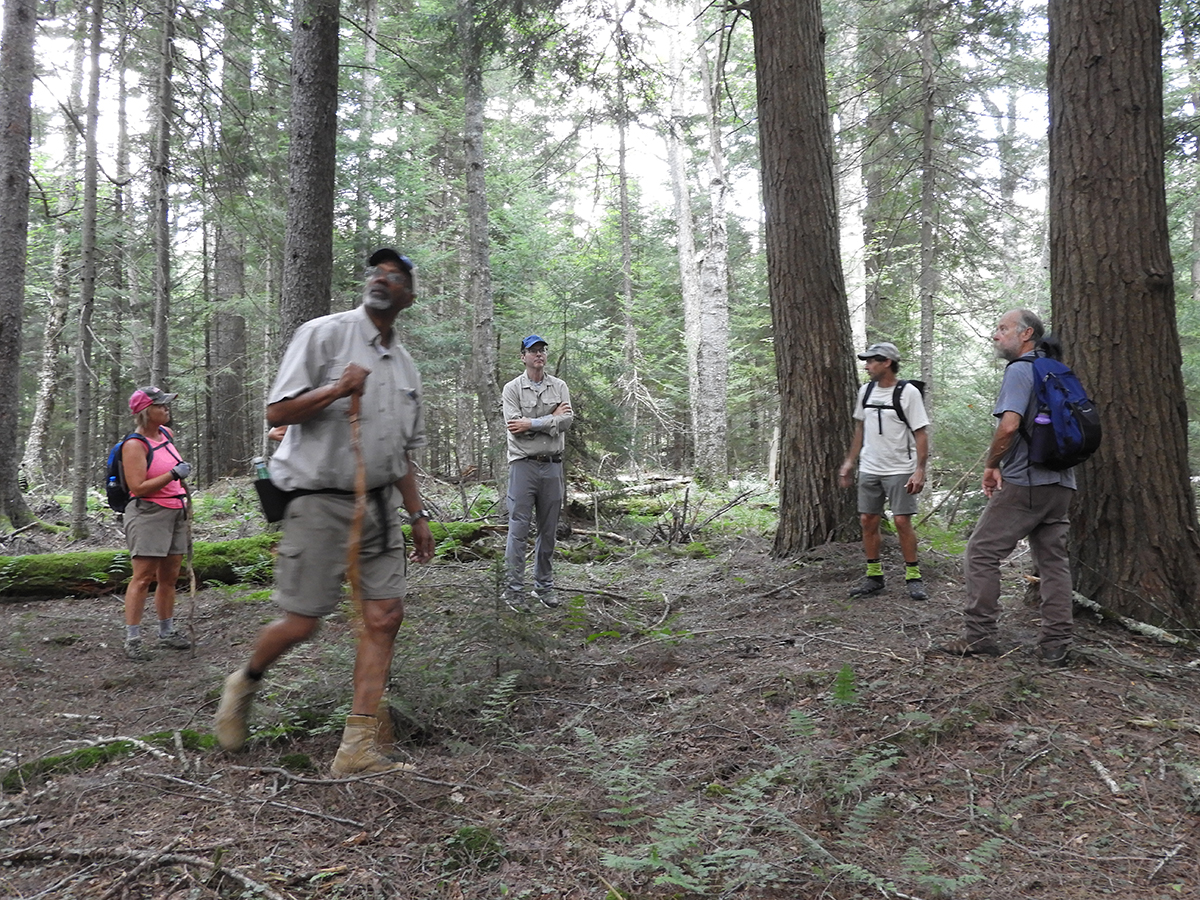 Some of the trees in the old-growth stand were nearing 200 feet tall
Some of the trees in the old-growth stand were nearing 200 feet tall
Sights, Smells, and Sounds
The smells! Oh, the smells and the sounds of different stages of decay and of walking on mossy ground and through squishy mud with sounds of the crunching of leaves and cracking of sticks. The layers of scents and sounds created a special sensory delight that changed countless times on the path.
We learned about different signs of tree health and what signs to look for, like different growth patterns, evidence of a lightning strike, and markings from animals doing what they have to do to survive in the wilderness. I can now identify the difference between a sapsucker and other types of woodpecker marking on trees, and am still thinking about the meticulous patterns of sapsuckers – similar to a cribbage board in some cases.
Spending three hours walking in the forest gave my mind space to let go of the everyday worries and shift focus to broader things like time. These old-growth trees have withstood the test of time. Some of the trees we saw were between 200 and 300 years old; some, perhaps even older. Centuries older than most humans live – I will only be on this earth a fraction of the life of an old-growth tree.
If only trees could talk and share what they have endured and understand their gift of being a setting for “forest bathing.” Over the years, I credit the quiet and calmness from spending time in the wilderness as a steady ingredient in my recipe for healing. I jumped back in time to those moments during our walk and was reminded of those memories I had tucked away.
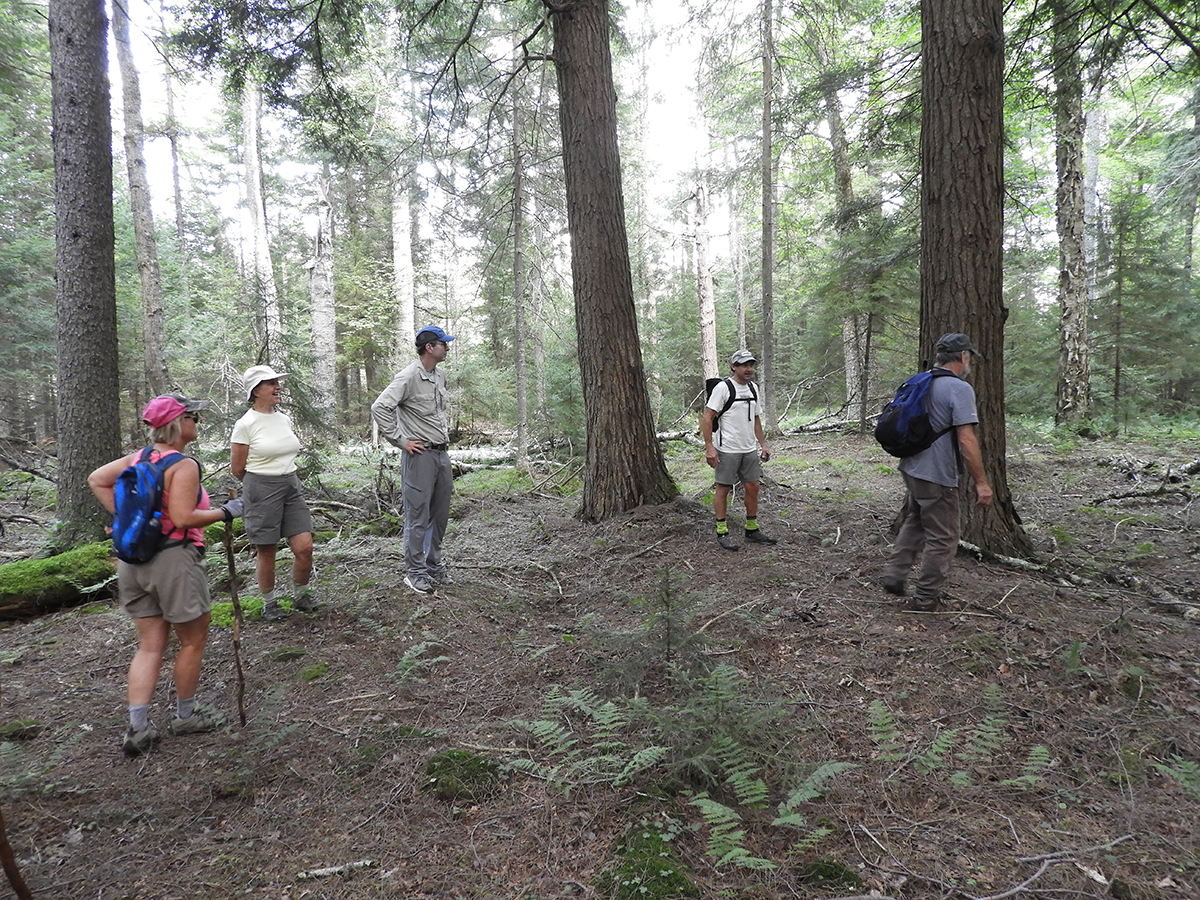 Old-growth forests tend to have little understory since the big trees block so much of the sunlight
Old-growth forests tend to have little understory since the big trees block so much of the sunlight
Protecting Forestlands
Preserving wilderness to ensure the survival of wildlife and protect Adirondack forestlands, which provide natural filters for our water and air so we all get cleaner air to breathe and cleaner water to drink, is critical work. The Adirondack Council’s role of researching new and different ways to preserve the ecological integrity and wild character of the Adirondacks and foster more vibrant communities means the world to those who share similar perspectives.
There is much work to be done, but sometimes it starts with just “taking a walk in the woods” to get lost in the trees and be transported to another place in time.
We returned to the cars with sweaty t-shirts and mud-caked shoes, beaming from the time spent together in the forest. I didn’t question the idea of heading into the woods on a 91-degree day and realized that the tall trees, vibrant mosses, and blanket of nature smells were exactly what I needed that day. Plus, the important reminder of my place in it all and the work of the Adirondack Council.
The paddle and the swim could wait.
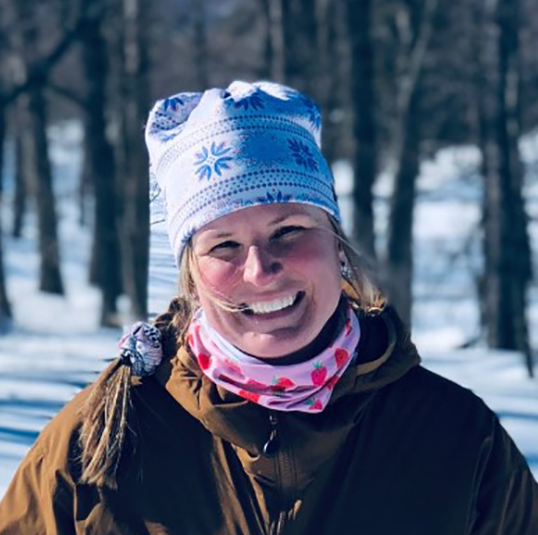
Amanda Birchenough-Morrell joined the Adirondack Council staff in April of 2021. She returned “home” to the Adirondacks after spending 15 years in marketing and development positions in Rochester, NY, Truckee, CA, and Middlebury, VT. She comes to the Council most recently from St. Lawrence University, where she managed the Reunion fundraising program. Amanda holds a BA in English Literature with a double minor in Environmental Science and Journalism from the University of New Hampshire. She loves exploring quiet places in the Park and connecting with nature. She is also an avid picnicker and delights in making homemade chutney, salsa, pickled treats, and jam.

